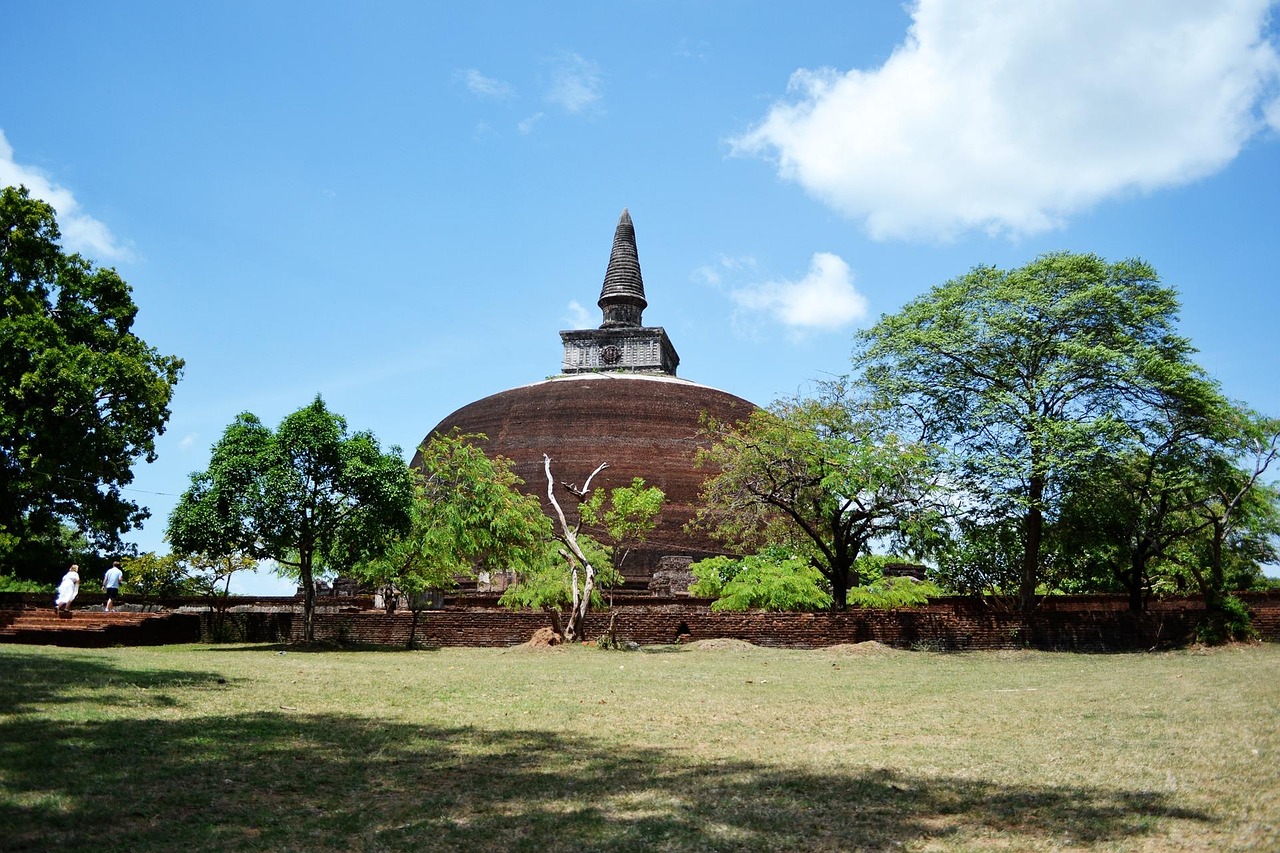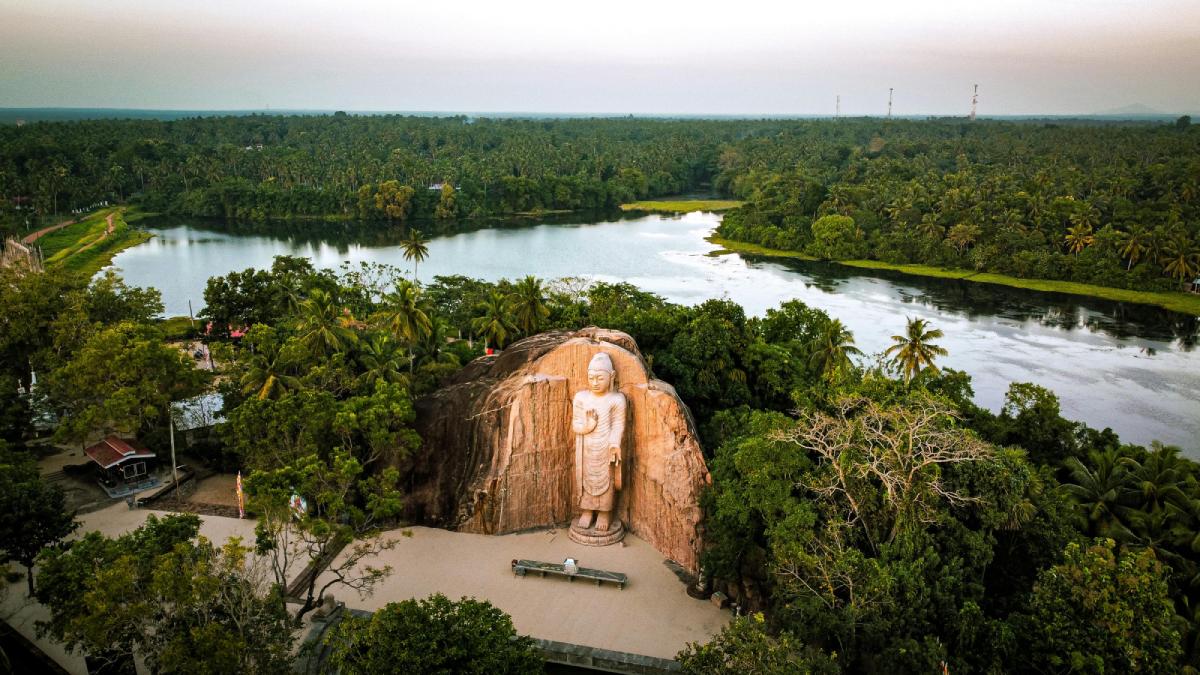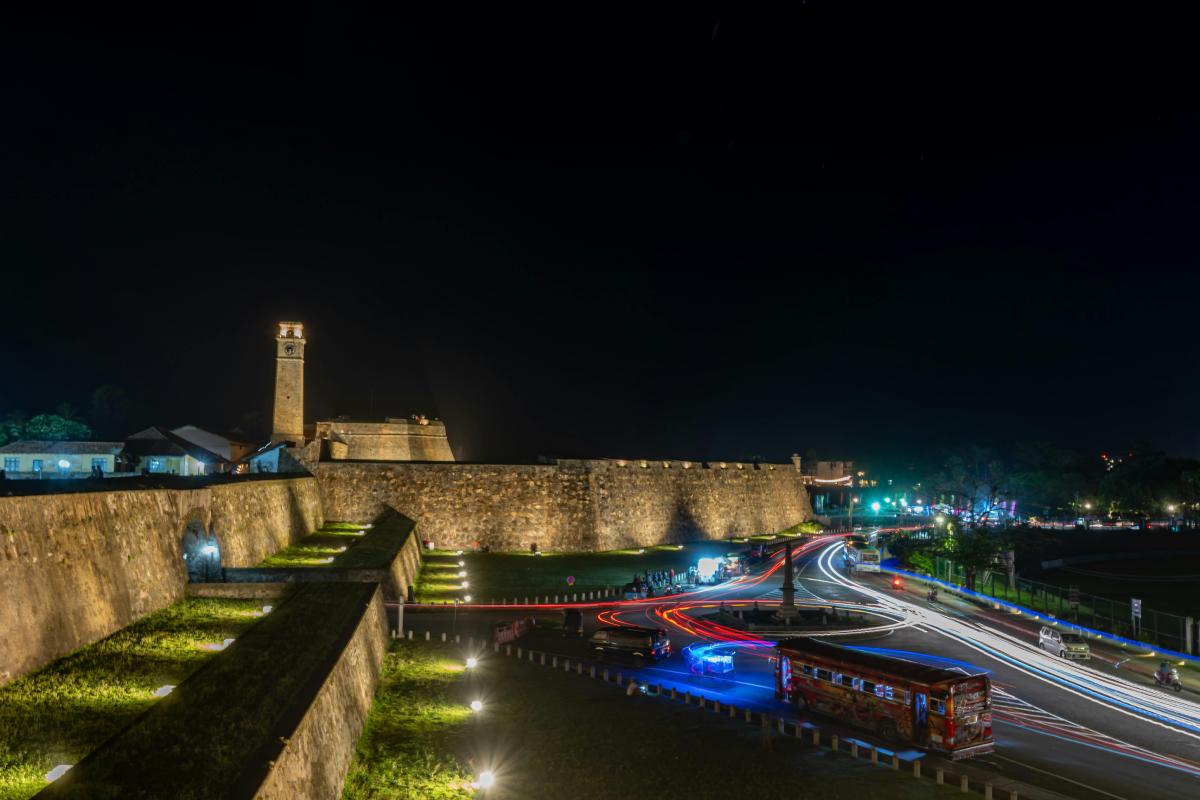Sri Lanka, the teardrop-shaped island nation in the Indian Ocean, offers travelers a remarkable blend of ancient history, breathtaking landscapes, vibrant culture, and incredible wildlife. Despite its compact size, this tropical paradise packs an impressive diversity of experiences that can satisfy even the most seasoned travelers. From pristine beaches and misty mountains to ancient ruins and lush tea plantations, Sri Lanka has something for everyone. Here’s my guide to the 10 must-visit places that showcase the best this enchanting island has to offer. 10 Must Visit Places in Sri Lanka.
1. Sigiriya (Lion Rock) – 10 Must Visit Places in Sri Lanka
Rising dramatically from the central plains, Sigiriya is perhaps Sri Lanka’s most iconic sight and a UNESCO World Heritage Site. This ancient rock fortress dates back to the 5th century AD when King Kasyapa built his palace atop this 200-meter-high rock to protect himself from his brother’s vengeful army.
The journey to the summit is an adventure in itself. You’ll climb past ancient frescoes of celestial maidens, a polished wall known as the “Mirror Wall,” and through massive lion’s paw carvings that once formed the entrance to the final staircase. The panoramic views from the top are nothing short of spectacular, offering a bird’s-eye perspective of the surrounding jungle and distant mountains.
The elaborate water gardens at the base of the rock demonstrate the sophisticated hydraulic engineering of ancient Sri Lanka. Visit early in the morning to avoid both the heat and crowds, allowing yourself at least 3-4 hours to fully explore this archaeological wonder.
2. Galle Fort
On the southwestern coast lies Galle Fort, a colonial time capsule surrounded by the Indian Ocean on three sides. Built first by the Portuguese and later expanded by the Dutch in the 17th century, this UNESCO World Heritage Site represents the best-preserved colonial sea fortress in Asia.
Walking through the narrow streets lined with Dutch colonial buildings, boutique shops, cafés, and art galleries feels like stepping back in time. The thick ramparts that once protected the city from naval attacks now serve as perfect sunset viewpoints and walking paths.
Don’t miss the iconic Galle Lighthouse, the Dutch Reformed Church with its historic gravestones, and the old Dutch Hospital complex now converted into an upscale shopping and dining area. The fusion of European architecture with South Asian traditions creates a uniquely charming atmosphere that makes Galle Fort a must-visit destination.
3. Yala National Park
For wildlife enthusiasts, Yala National Park offers the best safari experience in Sri Lanka. Covering approximately 979 square kilometers, it’s the country’s most visited and second-largest national park, famous for having one of the highest leopard densities in the world.
Beyond the elusive leopards, the park is home to elephants, sloth bears, crocodiles, and numerous bird species. The diverse landscape ranges from monsoon forests and grasslands to lagoons and beaches, creating various habitats for wildlife.
Morning safaris offer the best chance to spot animals when they’re most active. Consider staying in one of the eco-lodges near the park entrance to maximize your wildlife viewing opportunities. With patience and some luck, you’ll capture unforgettable sightings of Sri Lanka’s magnificent creatures in their natural habitat.
4. Kandy
Nestled among misty hills, Kandy served as the last capital of the ancient kings’ era of Sri Lanka and remains the cultural heart of the island. At its center lies the sacred Temple of the Tooth Relic (Sri Dalada Maligawa), which houses the Buddha’s tooth relic—one of Buddhism’s most revered artifacts.
During the annual Esala Perahera festival (usually in July or August), elaborately decorated elephants, traditional dancers, and drummers parade through the streets in one of Asia’s most spectacular festivals.
Beyond the temple, Kandy offers plenty to explore. Take a stroll around the serene Kandy Lake, visit the Royal Botanical Gardens in nearby Peradeniya with its impressive collection of orchids, or enjoy cultural performances showcasing traditional Kandyan dance and drumming. As the gateway to the central highlands, Kandy also serves as the starting point for the scenic train journey to Ella, often described as one of the world’s most beautiful rail routes.
5. Ella
This small mountain town has become increasingly popular among travelers seeking cooler climates and stunning landscapes. Surrounded by tea plantations, misty mountains, and cascading waterfalls, Ella offers a refreshing retreat from the tropical heat of the lowlands.
The town’s main attractions include the Nine Arch Bridge, an impressive colonial-era railway bridge where you can watch colorful trains pass through lush green surroundings; Little Adam’s Peak, an accessible hiking trail offering panoramic views; and Ella Rock, a more challenging hike rewarding climbers with spectacular vistas.
Visit a tea factory to learn about the production process and sample some of the world’s finest Ceylon tea straight from the source. With its laid-back atmosphere, cool climate, and natural beauty, Ella provides the perfect balance of adventure and relaxation.
6. Polonnaruwa

The ancient city of Polonnaruwa represents the pinnacle of Sri Lanka’s early civilization and serves as a testament to the island’s rich historical heritage. As the country’s second ancient capital, Polonnaruwa reached its golden age during the 12th century under King Parakramabahu I.
The well-preserved ruins spread across an extensive area, featuring magnificent stone sculptures, massive dagobas (dome-shaped structures containing relics), intricate carvings, and ancient buildings. The Royal Palace complex, the Sacred Quadrangle with its remarkable architecture, and the massive Gal Vihara Buddha statues carved from a single granite wall are particularly impressive.
Exploring this UNESCO World Heritage Site on bicycle is popular, allowing you to cover the vast archaeological zone efficiently while enjoying the natural surroundings. Visit early in the morning or late afternoon to avoid the midday heat and experience the magical atmosphere as sunlight plays on the ancient stones.
7. Mirissa
Sri Lanka’s coastline is studded with beautiful beaches, but Mirissa on the southern coast stands out for its perfect blend of natural beauty and relaxed atmosphere. The crescent-shaped beach with its golden sands, swaying palm trees, and clear waters creates a postcard-perfect tropical paradise.
Mirissa is also one of the best places in the world for whale watching (from November to April), offering opportunities to spot blue whales—the largest animals on Earth—along with sperm whales, dolphins, and other marine creatures.
Beyond the beach and whale watching, Mirissa offers excellent seafood restaurants, surf spots for various skill levels, and nearby secret beaches for those seeking more seclusion. As day turns to night, the beachfront comes alive with laid-back bars where you can enjoy fresh cocktails under the stars.
8. Nuwara Eliya
Known as “Little England,” Nuwara Eliya sits at an elevation of 1,868 meters in the central highlands and was a favorite retreat for British colonial administrators seeking respite from the tropical heat. The cool climate and misty landscapes make it feel worlds apart from the coastal regions of Sri Lanka.
The town retains much of its colonial charm with Tudor-style cottages, a golf course, well-manicured gardens, and the iconic red post office. Surrounding the town are emerald-green tea plantations that produce some of the world’s most expensive and flavorful high-grown teas.
Visit the Pedro Tea Estate for a factory tour, explore the beautiful Victoria Park, or take a boat ride on Gregory Lake. For the more adventurous, nearby Horton Plains National Park offers excellent hiking opportunities, including the famous World’s End cliff with its dramatic drop and far-reaching views (best visited early morning before the mist obscures the vista).
9. Anuradhapura
As Sri Lanka’s first ancient capital and one of the oldest continuously inhabited cities in the world, Anuradhapura holds profound historical and spiritual significance. This sprawling UNESCO World Heritage Site contains numerous dagobas, monasteries, ancient pools, and archaeological treasures dating back over 2,000 years.
The sacred Sri Maha Bodhi tree, believed to be grown from a cutting of the original tree under which Buddha attained enlightenment, has been continuously guarded and revered since it was planted in 288 BC, making it the oldest historically documented tree in the world.
Other highlights include the massive Jetavanarama Dagoba, which was once the third tallest structure in the ancient world after the Egyptian pyramids; the intricately carved Moonstone at Abhayagiri Monastery; and the Twin Ponds (Kuttam Pokuna), which showcase advanced hydraulic engineering. Plan at least a full day to explore this vast sacred city, preferably with a knowledgeable guide who can bring the ancient stones to life with historical context.
10. Adam’s Peak (Sri Pada)
Rising to 2,243 meters, Adam’s Peak holds religious significance for multiple faiths. Buddhists believe the depression at its summit is Buddha’s footprint, while Hindus attribute it to Lord Shiva, Christians and Muslims to Adam, hence the mountain’s various names across cultures.
The pilgrimage season runs from December to May when thousands of devotees make the challenging climb, often overnight, to reach the summit for sunrise. The path is illuminated, with tea shops and rest points along the way. The 5,500 steps can be demanding, but the spiritual atmosphere and the breathtaking sunrise views across the island make it a transformative experience.
Outside the pilgrimage season, fewer people attempt the climb, and some facilities may be closed. However, this also means a more peaceful experience for those seeking solitude in this sacred place.
Practical Tips for Traveling in Sri Lanka
- Best Time to Visit: The weather patterns vary across the island. The southwest experiences monsoon rains from May to September, while the northeast sees heavy rainfall from October to January. December to March is generally considered the best time for beach areas in the south and west.
- Transportation: The railway network connects major cities and offers scenic journeys, particularly in the hill country. For flexibility, consider hiring a driver-guide for all or part of your trip. Tuk-tuks are convenient for short distances, while local buses provide an authentic (if sometimes crowded) experience.
- Cultural Respect: When visiting temples, dress modestly with shoulders and knees covered. Remove shoes and hats before entering religious sites. Always ask permission before photographing people, especially monks.
- Food: Don’t miss trying traditional Sri Lankan rice and curry, hoppers (bowl-shaped pancakes), kottu roti (chopped flatbread stir-fried with spices and meat or vegetables), and fresh seafood on the coast.
- Sustainability: Choose responsible wildlife tourism operators who maintain appropriate distances from animals. Consider staying at eco-friendly accommodations that support local communities and conservation efforts.
Sri Lanka may be small in size, but it delivers experiences on a grand scale. From ancient civilizations to colonial heritage, pristine wilderness to picturesque tea estates, this island nation offers remarkable diversity that rewards travelers with unforgettable memories. Whether you’re seeking adventure, relaxation, cultural immersion, or wildlife encounters, these ten destinations provide a perfect introduction to the wonder and magic of Sri Lanka.

